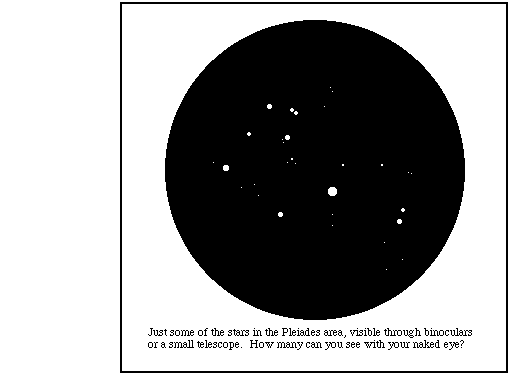

Other open clusters of note include M11 in Scutum, the "Double Cluster" in Perseus, M44 (the "Beehive") in Cancer, M36, M37, and M38 in Auriga, and M41 in Canis Major. There are many more that are worth your attention, and the big and flashy open clusters tend to show up best in smaller telescopes. With the light-gathering power of larger scopes, so many background stars become visible that it's hard to differentiate them from cluster stars. Check the list in the Open Cluster Database for more open clusters. Each one has a character all its own. A cluster can be loose or compressed, composed of bright or faint stars. It may have hundreds of visible stars or just a dozen. Some of the stars may be colored. Many open clusters are visible as fuzzy spots even in 7x35 binoculars, so you don't need a telescope to start hunting them down.